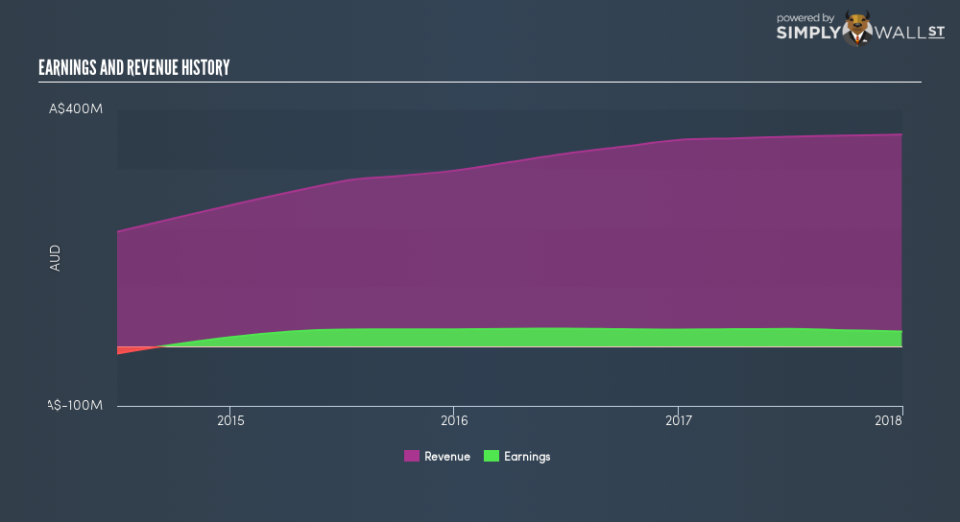Has Japara Healthcare Limited (ASX:JHC) Improved Earnings In Recent Times?

Understanding Japara Healthcare Limited’s (ASX:JHC) performance as a company requires examining more than earnings from one point in time. Today I will take you through a basic sense check to gain perspective on how Japara Healthcare is doing by evaluating its latest earnings with its longer term trend as well as its industry peers’ performance over the same period.
See our latest analysis for Japara Healthcare
Was JHC’s weak performance lately a part of a long-term decline?
JHC’s trailing twelve-month earnings (from 31 December 2017) of AU$25.4m has declined by -11.9% compared to the previous year. Furthermore, this one-year growth rate has been lower than its average earnings growth rate over the past 5 years of 24.5%, indicating the rate at which JHC is growing has slowed down. Why is this? Well, let’s take a look at what’s going on with margins and whether the whole industry is facing the same headwind.
In the last few years, revenue growth has been lagging behind which indicates that Japara Healthcare’s bottom line has been driven by unsustainable cost-reductions. Looking at growth from a sector-level, the Australian healthcare industry has been growing, albeit, at a unexciting single-digit rate of 2.3% over the prior year, and a substantial 18.5% over the past five. This growth is a median of profitable companies of 21 Healthcare companies in AU including Healthscope, Pacific Smiles Group and Apiam Animal Health. This means any recent headwind the industry is facing, it’s hitting Japara Healthcare harder than its peers.
In terms of returns from investment, Japara Healthcare has fallen short of achieving a 20% return on equity (ROE), recording 4.8% instead. Furthermore, its return on assets (ROA) of 2.4% is below the AU Healthcare industry of 6.1%, indicating Japara Healthcare’s are utilized less efficiently. However, its return on capital (ROC), which also accounts for Japara Healthcare’s debt level, has increased over the past 3 years from 3.9% to 4.7%.
What does this mean?
While past data is useful, it doesn’t tell the whole story. Generally companies that face a drawn out period of decline in earnings are going through some sort of reinvestment phase Although, if the whole industry is struggling to grow over time, it may be a signal of a structural change, which makes Japara Healthcare and its peers a higher risk investment. I suggest you continue to research Japara Healthcare to get a more holistic view of the stock by looking at:
Future Outlook: What are well-informed industry analysts predicting for JHC’s future growth? Take a look at our free research report of analyst consensus for JHC’s outlook.
Financial Health: Are JHC’s operations financially sustainable? Balance sheets can be hard to analyze, which is why we’ve done it for you. Check out our financial health checks here.
Other High-Performing Stocks: Are there other stocks that provide better prospects with proven track records? Explore our free list of these great stocks here.
NB: Figures in this article are calculated using data from the trailing twelve months from 31 December 2017. This may not be consistent with full year annual report figures.
To help readers see past the short term volatility of the financial market, we aim to bring you a long-term focused research analysis purely driven by fundamental data. Note that our analysis does not factor in the latest price-sensitive company announcements.
The author is an independent contributor and at the time of publication had no position in the stocks mentioned. For errors that warrant correction please contact the editor at editorial-team@simplywallst.com.

 Yahoo Finance
Yahoo Finance 
